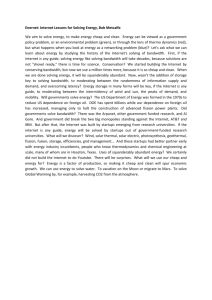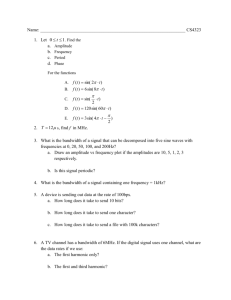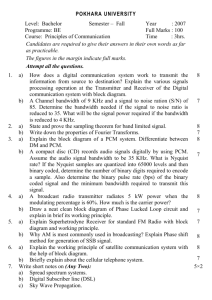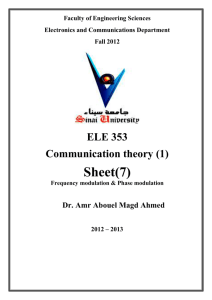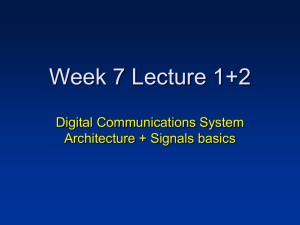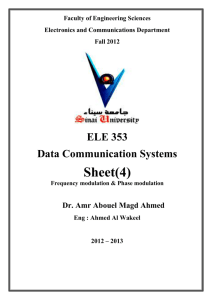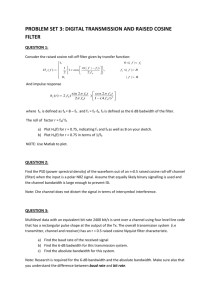assignment1v2
advertisement
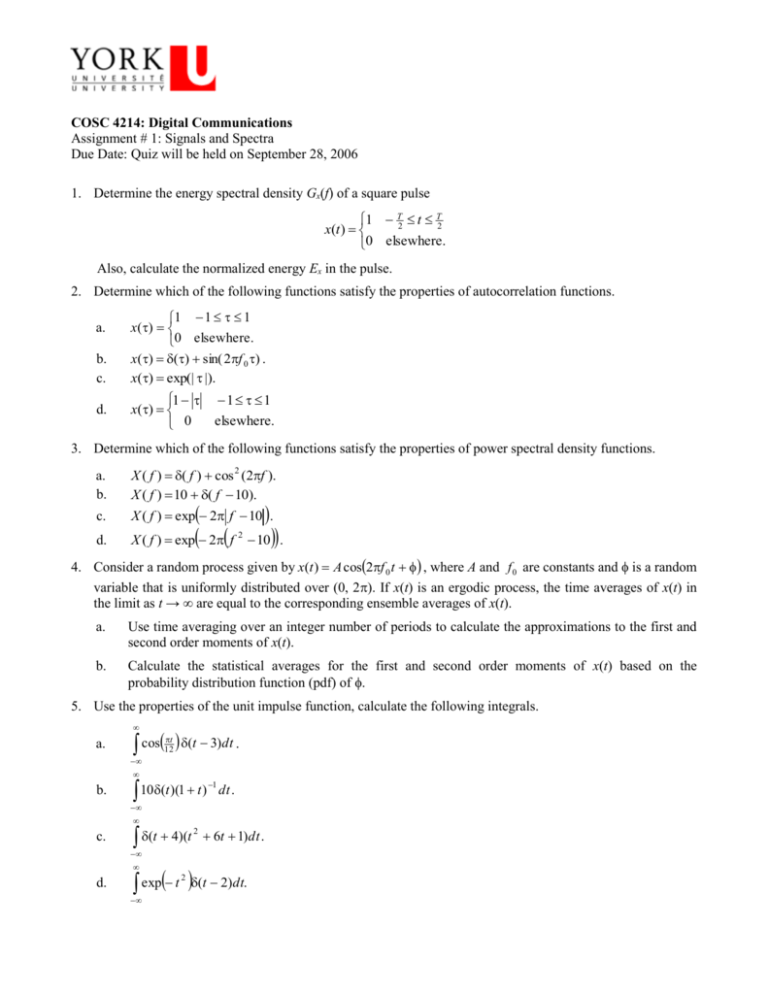
COSC 4214: Digital Communications Assignment # 1: Signals and Spectra Due Date: Quiz will be held on September 28, 2006 1. Determine the energy spectral density Gx(f) of a square pulse 1 T2 t T2 x(t ) 0 elsewhere. Also, calculate the normalized energy Ex in the pulse. 2. Determine which of the following functions satisfy the properties of autocorrelation functions. a. 1 1 1 x() 0 elsewhere. b. c. x() () sin( 2f 0 ) . x() exp(| |). d. 1 x() 0 1 1 elsewhere. 3. Determine which of the following functions satisfy the properties of power spectral density functions. a. b. X ( f ) ( f ) cos 2 (2f ). X ( f ) 10 ( f 10). c. X ( f ) exp 2 f 10 . d. X ( f ) exp 2 f 2 10 . 4. Consider a random process given by x(t ) A cos2f 0 t , where A and f 0 are constants and is a random variable that is uniformly distributed over (0, 2). If x(t) is an ergodic process, the time averages of x(t) in the limit as t → ∞ are equal to the corresponding ensemble averages of x(t). a. Use time averaging over an integer number of periods to calculate the approximations to the first and second order moments of x(t). b. Calculate the statistical averages for the first and second order moments of x(t) based on the probability distribution function (pdf) of . 5. Use the properties of the unit impulse function, calculate the following integrals. a. cos (t 3)dt . t 12 b. 10(t )(1 t ) 1 dt . c. (t 4)(t d. 2 6t 1)dt . exp t (t 2)dt. 2 6. The Fourier transform of a deterministic signal x(t) is defined as X(f) = sinc(f). Find the autocorrelation function, Rx(), of the signal x(t). 7. Find the convolution X1(f) * X2(f) for the spectra shown in the following figure. 8. The two-sided power spectral density, Gx(f) = 106f2 of a waveform x(t) is shown in the following figure. a. b. Find the normalized average power in x(t) over the frequency band from 0 to 10kHz. Find the normalized average power in x(t) over the frequency band from 5 to 6kHz. 9. Determine the impulse response for the following circuit. 10. Given the spectrum 4 sin ( f 10 )10 4 G x ( f ) 10 6 4 ( f 10 )10 6 2 find the value of the signal bandwidth using the following bandwidth definitions. (a) (b) (c) (d) (e) Absolute bandwidth. Half power bandwidth. Null-to-Null bandwidth. Noise equivalent bandwidth. Bandwidth beyond which the attenuation is 35 dB.



